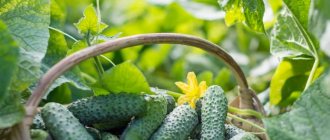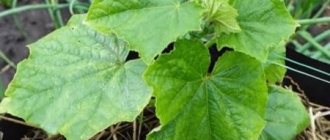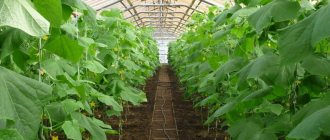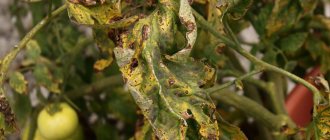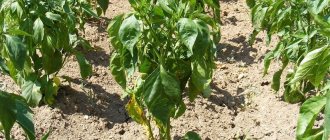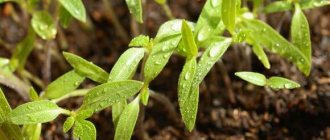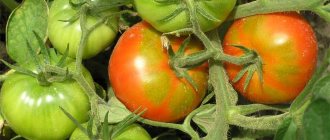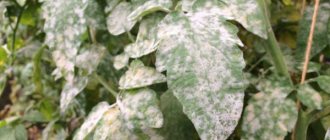Every gardener wants to grow strong, crispy cucumbers, but this does not always work out. Often the fruits turn out soft and seem to be flaccid. Sometimes fresh cucumbers seem good, but after canning they become soft. These problems start in the garden. Let's figure out why this happens and how to cope with the situation.
Why do cucumbers grow soft?
There can be many reasons for this unpleasant phenomenon. The influence of diseases or violations of the necessary growing conditions is quite likely. It is important to remember that you should not plant cucumbers and tomatoes nearby in the same greenhouse, as they require different microclimates.
In the greenhouse
Zelentsy can become soft under the influence of the following factors:
- Too warm and waterlogged soil. In such conditions, pathogenic microorganisms multiply well, stimulating the process of decay.
- Too dense plantings. They also create a favorable microclimate for diseases, and closely growing bushes guarantee the rapid spread of diseases.
- Lack of moisture. First, the shoot is affected and withers, and then the green shoots begin to shrivel.
- Fungal diseases. Their spores enter the greenhouse thanks to the wind, and the warm and humid atmosphere creates ideal conditions. The most popular diseases of cucumbers are gray and white rot, fusarium, and brown spot.
In the open ground
Cucumbers become cottony under the influence of the same factors as in the greenhouse.
- Improperly organized watering. If cold water is used, this leads to poor growth of the bush and fruits, the appearance and development of various diseases. Lack or excess of moisture causes cucumbers to become hollow.
- Growing bushes too close is a common mistake gardeners make.
- Significant differences in day and night temperatures. As a result, the fetus does not develop and form properly.
- Excessive heat and exposure of leaves to direct sunlight. Aggressive sun causes shoots to wilt.
- Lack of microelements.
- Excess nutrients. For example, if the soil is oversaturated with nitrogen, green mass actively grows, which shades the fruits. The ovaries become small and soft.
- Fungal diseases.
Interesting fact: cucumber juice will do a great job of stopping squeaky door hinges if you use it instead of a lubricant.
It's worth understanding the reasons
Cucumber is a vegetable crop that is demanding on the temperature background, the level of humidity and acidity of the soil. Sudden changes up or down slow down the formation of ovaries. The list of negative factors that make crispy fruits soft will continue with the reasons listed below:
- tomatoes are too close;
- diseases of a bacterial or infectious nature;
- excess or lack of nutrients in the soil;
- cucumber bushes are too close;
- lack of sunlight;
- prolonged drought.
Attention should be paid to watering cucumber plants. The lower the level of impurities in the liquid, the greater the benefit for the seedlings. The vegetable does not tolerate temperature shock well.
On a note! Watering is allowed with water that has stood for at least 4-5 hours. The liquid temperature should be + 15 C + 18 C.
Diseases that cause cucumbers to become soft
Cucumbers often suffer from various diseases. Some infections specifically affect greens, making them soft. To engage in prevention, you need to have an understanding of the most common diseases.
Root rot
Main symptoms:
- Rapid yellowing of leaves.
- Productivity drops sharply.
- Cucumbers become lethargic.
The main reason is excess or lack of water in the soil. If cucumbers grow in open ground, overheating of the ground is another dangerous factor. To combat the disease, you can use well-proven folk remedies, such as ash, charcoal or copper. These substances, crushed into powder, should be sprinkled on the roots that are visible on the surface of the soil. This will help curb the development of the disease.
Powdery mildew
The main symptom is a whitish or reddish coating that appears on the upper side of the leaf blade. It causes the leaf to dry out.
The disease then attacks the stems and then the fruits. Cold weather is especially conducive to the spread of powdery mildew. At risk are bushes growing on soil oversaturated with nitrogen fertilizers.
Ways to fight:
- Promptly remove ripe fruits.
- Carry out autumn disinfection of the greenhouse.
- Do not overheat the cucumbers, keeping the temperature in the greenhouse no higher than +25 °C.
- Plant cucumbers in a new place every year.
- Use seeds of hybrids that are immune to the disease.
Fusarium
The main reason for the development of this fungus is waterlogging.
Main symptoms:
- Yellowing and wilting of leaves.
- The stem becomes thinner and acquires a brown color.
- The fruits begin to rot and become soft.
The following technique will help to definitively make a diagnosis: you need to cut the shoot along the vessels and carefully examine the cut. A diseased plant has vessels with a pronounced brown tint.
The best way to combat this is to replace the soil seasonally. The top layer must be removed and new soil filled in. If the bushes are already sick, then they need to be treated with special solutions, and the hopeless ones must be removed.
Features of prevention
Greenhouse plants quite often wither due to violation of the rules of care and neglect of preventive measures. Gardeners with many years of experience in growing cucumbers in protected soil conditions rarely let the situation get to such a deplorable state.
Nevertheless, competent and timely preventive measures can largely protect greenhouse cucumbers from the development of wilting processes.
- Using exclusively high-quality seed material, as well as healthy and hardened cucumber seedlings.
- Strict adherence to basic technology in the manufacture of substrates, which must take into account the timing of their use. It is advisable to give preference to the use of modern low-volume technologies, which provide for regular replacement of the soil substrate used for greenhouse cultivation of vegetables.
Creation and control of optimal conditions for proper growth and stable development of cucumbers helps to lengthen the growing season and fruiting time
- Creating and monitoring optimal conditions for proper growth and stable development of cucumbers helps to lengthen the growing season and fruiting time. In the conditions of ground greenhouses, during the fruiting stage and after complete rooting of vegetable crops, the method of adding well-rotted compost to the surface of the beds is practiced, which stimulates the formation of an additional root system. In addition, high-quality soil aeration should be ensured, which has a beneficial effect on the yield of greenhouse cucumbers.
- The use of a highly efficient drip irrigation system requires careful control of the drainage of nutrient solutions, which will not allow liquid fertilizers to stagnate and become inoculated with pathogenic microorganisms.
- Performing the most correct and low-traumatic formation of cucumbers, as well as timely harvesting, which will minimize the load on the vegetable crop and slow down the aging process of the roots.
You may also be interested in an article about effective fertilizers for cucumbers in a greenhouse and traditional methods of pest control.
What to do if cucumbers are soft in a greenhouse or open ground
Before taking any action, it is necessary to find out the cause.
- Cucumbers lack microelements - adding organic matter, such as humus or peat, will help.
- If there is an excess of nitrogen in the soil, you need to add manure-based fertilizer and urea to it.
- If the watering regime is incorrect, the irrigation schedule should be reconsidered. In hot, dry weather, water more abundantly in the morning and evening; on cool days, limit watering. To do this, use warm water. It is optimal to use drip irrigation systems.
- The cause of the softness was a fungal disease - it is necessary to disinfect the greenhouse, soil, and all equipment. The dead bush should be removed, and the affected areas should be cut out from diseased plants. The greenhouse must be ventilated frequently and the temperature maintained at least +18 °C.
- Constant collection of ripened fruits can correct the situation. Overripe cucumbers begin to take moisture from their resources. This is the reason for their hollowness.
Preventive measures
To prevent the fruit from softening, you can take the following measures:
- It is important to control the temperature in the greenhouse when the cucumbers bloom and begin to bear fruit; it should not be lower than +18 °C.
- The greenhouse needs to be ventilated more often.
- The soil around the shoots must be loosened regularly.
- Inspect all bushes from time to time to identify diseases. Cut out the affected areas immediately.
- When choosing seeds, give preference to resistant varieties and change them from time to time.
- Maintain crop rotation. In addition, in the spring, before planting, it is useful to change the top layer of soil to prevent plants from being affected by diseases.
- Avoid overcrowding of plantings. It is necessary to leave at least 15 cm between bushes.
Fun fact: a slice of cucumber will make your shoes shine and can easily replace shoe polish. In addition, cucumber juice repels water, so the shoes can be worn in the rain.
Tips from Mr. Summer Resident on growing and storing cucumbers
To get a high-quality and abundant harvest, you must adhere to the following rules:
- Water the bushes in the evening using warm water and a drip system.
- Do not forget to feed the shoots with organic matter and mineral fertilizers in a timely manner.
- Choose seeds of resistant varieties and carry out preventive measures against diseases in a timely manner.
- Make sure that the greenhouse has a comfortable temperature and light conditions, as well as the required level of soil and air humidity.
- Pick ripe fruits in a timely manner.
- Store freshly picked cucumbers in a cool place; wash them only before use.
- Make greenhouses from quality materials.
- For watering, it is better to install a container in the greenhouse, so the water will be warm all the time.
Unbalanced diet
The main and most common reason that cucumbers grow empty is untimely feeding. Basically, this is an excess of nitrogen with a lack of phosphorus, potassium and calcium, as well as poor digestibility of microelements.
Secret No. 1! Many gardeners make the mistake of considering mullein to be the best fertilizer. This is not the case for cucumbers. During the flowering and ovary phases, it is the mineral nutritional components that are needed - potassium, calcium, phosphorus, magnesium, iron and many others.
Important! Do not overfeed cucumbers with nitrogen. An overdose occurs even if, during digging, more than 10 kg of manure per 1 sq. m was added to the planting. m, and then fed with urea (urea or ammonium nitrate).
What to do?
When digging when planting, it is better to add compost and wood ash. You can use mineral fertilizers (complex, such as diammophosphate, potassium monophosphate, pure, phosphorus - superphosphate, potassium - potassium sulfate or specialized ones, such as Acrycola).
Important! To quickly correct the situation, you can carry out foliar feeding, i.e. Spray cucumber bushes directly on the leaves.
Calcium is necessary for the development of the root system.
Watch the video : How to help cucumbers with a lack of calcium and microelements (if voids form inside the fruit)
Important! Lack of nutrients can lead to twisted and deformed fruits or yellowing of leaf edges.
Why do cucumbers become soft when pickled or marinated in a jar?
There are several reasons why pickles become soft in a jar. They also belong to lightly salted and pickled cucumbers. Let's list them.
Lack of tightness
The fruits soften and become watery if air gets under the lid. To avoid this, you need to use high-quality caps and a working seaming wrench. If the brine in the jar becomes cloudy, it means that air has got in there, and the cucumbers will become soft and will quickly deteriorate.
Violation of sterilization technology
Cucumbers must be washed thoroughly to avoid mold. The main symptom indicating poor heat treatment is a swollen lid and cloudy brine. This situation can be corrected. It is necessary to treat the container with hot steam and boil the brine.
Errors when preparing brine
The main task in this case is the correct salt concentration. Ideally, this figure reaches from 6 to 12%. You should use table salt, not iodized salt, then the cucumbers will definitely be tasty. Water hardness is also important. If it is soft, the cucumbers will become loose, flabby, and acquire an unpleasant metallic taste.
Poor quality cucumbers
The fruits should be small or medium. One container should contain cucumbers of approximately the same size so that they are evenly salted.
Damaged fruits should not be used, as they may contain pathogenic bacteria. It is optimal to pickle cucumbers no later than 24 hours after harvest.
Mistakes when laying cucumbers
If the fruits are not laid correctly, the upper layers begin to put a lot of pressure on the lower ones, as a result of which they are damaged. It is best to lay cucumbers vertically.
When salting in a barrel or pan, it is necessary to use pressure. Its weight should be approximately 10% of the weight of the fruit.
Improper storage
The temperature at which jars of canned cucumbers are kept should be +1…+3 °C. A cellar or refrigerator is suitable for this.
There are many ways to preserve cucumbers, all of them are very popular among housewives. So that labor and vegetables do not go to waste, you must strictly follow the correct technology, then soft cucumbers do not threaten to appear when pickling and pickling.
Filling with hot brine
This method is good because it allows you to sterilize salted fruits. The recipe is simple: dissolve one heaped tablespoon of salt in a liter jar of water. Then pour this mixture over the cucumbers and add spices. Leave for three days to ferment. After this, the brine must be boiled and poured over the vegetables, which must first be washed and placed in a sterile container. After this, the jar can be rolled up and stored in a cool place. It is important not to increase the fermentation time, otherwise the cucumbers will become soft.
Pickling
Are your pickled cucumbers getting soft? Check if you are doing everything correctly. To prepare this way, you need to place the cucumbers in a clean three-liter jar, adding greens. Then pour boiling water over the fruits and leave for 30 minutes to sterilize. After this, pour the water into a saucepan, add 1 tablespoon of salt, 2 tablespoons of sugar, 70 g of acetic acid. Bring the entire mixture to a boil, pour over the cucumbers and roll up.
Cold billet
For this option, not only glass jars are suitable, but also barrels and large enamel pans. First you need to put the cucumbers in water and leave them there for several hours. This is done to ensure that the fruit remains crispy. Then the cucumbers are placed in a container, topped with spices. Vegetables are poured with brine, for the preparation of which 150 g of salt are dissolved in 3 liters of water. Infuse for two days in a warm room.
After this, the brine must be drained, brought to a boil, cooled and poured over the cucumbers. Then you can seal with lids. The variety of cucumber is also important. Nezhinsky, Crispy, Zozulya, and Salted are ideal.
Variety selection
Therefore, if you plant, then use familiar varieties and good hybrids, purchased in a trusted place from trusted manufacturers.
Secret #3 Don't want empty cucumbers? Do not plant early and pollinated varieties. With short daylight hours, they are physiologically unable to form full-fledged fruits.
If you plan to choose parthenocarpic hybrids for autumn rotation, which do not depend on the length of daylight hours, medium or late ripening. And well branched: the main vine with a short daylight hours reduces the growth force.
Juicy, crispy F1 hybrids that do not form voids in the fruits:
- Grasshopper,
- green wave,
- Petrel,
- Buyan,
- Makar,
- Dragonfly,
- The hit of the season,
- Okhotny Ryad,
- Marina Grove.
Trick! If you picked cucumbers and they turned out to be hollow inside, but you need to preserve them, use this advice: soak in salted water before canning for 2-3 hours. The concentration of the solution per 1 liter of water is 1 teaspoon. A spoonful of salt. So that they are saturated with water. And the salt will hold it in. And for the winter there will be cucumbers - not soft, without voids. That's the whole secret.
Watch the video : How to grow a cucumber without voids
General recommendations and secrets for pickling cucumbers from Mister Summer Resident
You should not use cucumber varieties intended for salads. Fruits with thin skin and high sugar content should be preserved.
Our website https://mrdachnik.com reminds us of some other points:
- Bacteria in jars of cucumbers will not develop if oak leaves, mustard or horseradish are used during preservation.
- The fruits must be free of damage and signs of disease.
- Cans of preserved food should not be left in a warm place.
- If you add 50 g of vodka to a jar, the cucumbers will turn out strong and crispy.
Before preservation, you can soak the cucumbers in cold water for 4 hours. You should not overuse garlic, as it causes the fruit to soften.
What to do with already soft pickles, is it possible to make them crispy?
There is one way to get barreled cucumbers to start crunching, to revive them. It is necessary to select the best cucumbers from the container, throw away all wrinkled and damaged ones, rinse them in a weak salt solution (the concentration should reach 3%).
Then you need to remove the spices from the barrel, rinse them thoroughly in boiled water and place them at the bottom of liter jars. Place selected cucumbers on them. Bring the brine to a boil, strain and pour over the vegetables. If there is not enough of it, you can prepare fresh one. Then sterilize the jars in boiling water for 20 minutes, roll up the lids and wait until they cool. After this, you can put them in the cellar.
